Patents
Below is an overview of notable patents that were issued by the United States Patent and Trademark Office (USPTO) in fiscal year 2023, including a concise description of what is novel about the invention, what useful applications might be, and how it might be adopted commercially.
The technologies listed below may be available for licensing by industry. If interested, please email ott@jpl.nasa.gov.
Recently Issued Patents
Composite Electrode Materials for Fluoride-Ion Electrochemical Cells
-
US Patent Number: 11,251,420
-
Issued On: August 7, 2023
-
Inventors: Simon C Jones, Isabelle M Darolles, Hongjin Tan, Nam Hawn Chou, Kaoru Omichi, Ryan McKenney, Qingmin Xu, Christopher J Brooks
Fluoride ion battery systems use electrode materials with tailored structures and composition that improve battery performance over the state of the art. The key innovation yields improvements to battery performance by using metal nanoparticles that function as catalysts. This patent discloses specific methods of making coated metal nano particles to build these kinds of batteries.
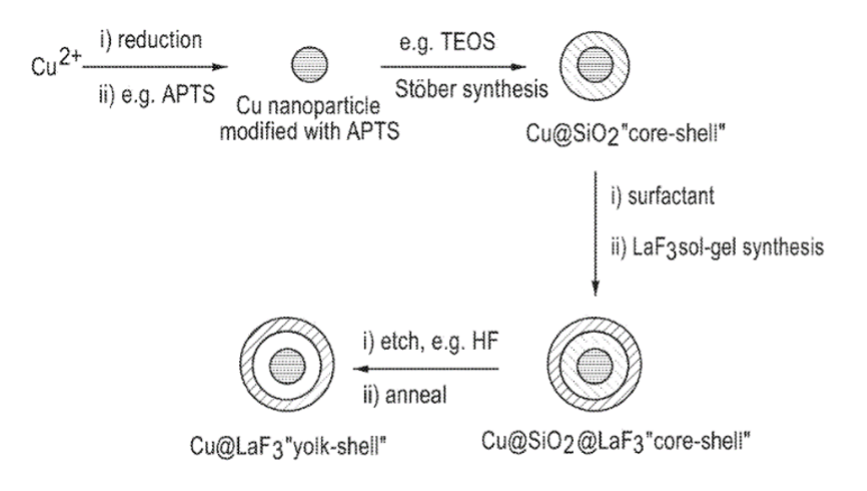
Metal nanoparticle. (credit: NASA/JPL)
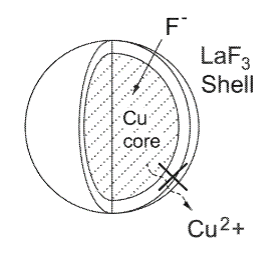
Process for making a metal nanoparticle. (credit: NASA/JPL)
These types of batteries can also be built in a solid-state form, rather than using a liquid or gel electrolyte. This has advantages to extend the life and operating temperature range of the battery. Solid-state fluoride ion batteries may also offer increased energy density (more electrical energy stored for a given battery mass).
Improved battery technology will have a significant impact in many aspects of society, such as more range for electric vehicles, electric grid and home power storage, and portable medical and electronic devices.
SmallSat Hybrid Propulsion System
-
US Patent Number: 11,578,682
-
Issued On: February 14, 2023
-
Inventors: Ashley C. Karp, Elizabeth Jens, Jason Rabinovitch, Barry Nakazono, Antonietta Conte
SmallSats are a class of small satellites that typically weigh less than several hundred kilograms. They are often launched as shared payloads on a common launch vehicle. There is strong demand in the commercial space market for reliable propulsion for small satellites that can perform altitude adjustments, insertion maneuvers, and orbit or trajectory corrections.
New propulsion systems for small satellites and discloses their design, methods of manufacture, component systems, and materials are presented in this patent. The key innovation is in the miniaturization and design of small-scale components that are suitable for use in these small satellites.
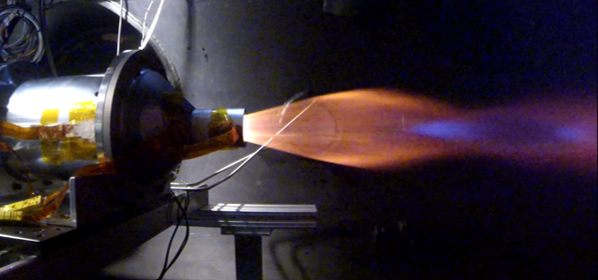
Vacuum ignition test. (credit: NASA/JPL)
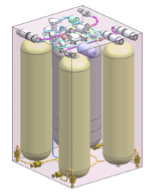
A CubeSat design. (credit: NASA/JPL)
Optical Ground Terminal
-
US Patent Number: 11,616,574
-
Issued On: March 28, 2023
-
Inventors: Jose E. Velazco
The Optical Ground Terminal (OGT) is a novel optical terminal that allows high data rate optical communications with other optical terminals in space and with airborne and spaceborne optical communicators. The OGT allows fast communications with line of sight and non-line of sight operating conditions and could also be an enabling technology for what is termed “last mile” connectivity, the Internet of Things (IoT), and smart cities.
This ground terminal addresses the need for new and affordable communications stations with small antennas that can manage high demand and track fast orbiting spacecraft from the ground. Most terminals will be installed on high ground elevations such as hilltops, posts, or rooftops. In such installations they can also provide what is known as the last mile of internet connectivity from trunk fiber-optic lines to individual connection points such as residential and business users.
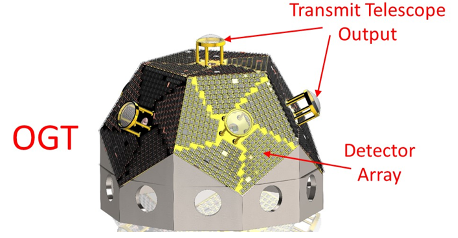
Optical Ground Terminal transceiver unit. (credit: NASA/JPL)
The OGT uses a multifaceted geometry transceiver unit, where each facet holds a photodetector array receiver and a transmit telescope.
The OGT could also be extremely helpful in emergency responder applications. For instance, a mobile OGT could be used as a gateway for a swarm of drones. The drones could obtain real-time high-resolution optical and thermal images of a zone under distress and share that information with the ground responders using an OGT.
Model Based Methodology for Translating High-Level Cyber Threat Descriptions into System-Specific Actionable Defense Tactics
-
US Patent Number: 11,425,157
-
Issued On: August 23, 2022
-
Inventors: Kymie Tan, Jeremy L Pecharich, Arun A Viswanathan, Deniz E Celik, Bryan Johnson, Brian Wright, Marc I Pomerantz
A novel automated approach for performing cyber risk assessments of complex environments was developed. This approach is useful for securing the ground system of a space mission, but there are also significant applications in more general areas.
The software is called the Cyber Analysis and Visualization Environment (CAVE), which uses a deductive reasoner, and also provides a declarative logic programming interface. This allows a decision maker, e.g., a system administrator, designer, or engineer, to interact with a model of a complex system, and pose relevant queries to reason about certain risks, such as:
- network relationships,
- network connectivity through firewalls,
- how applications access files on a system,
- how users access files on a system, and how they interact with access control policies,
- how an adversary can gain privilege by exploiting known vulnerabilities,
- how an adversary can exploit a network vulnerability to gain access to a critical application.
With public awareness increasing due to significant cybersecurity, there is a strong market need for improved cybersecurity tools and technologies.
Also, cyber protection is a priority for JPL, and this technology may be of benefit in assessing the risks posed by the cyber threats to space missions. Understanding overall cyber risk requires gathering detailed information, such as hosts, routers, applications, network connectivity, firewall policies, access control policies, software packages, and vulnerabilities, and then analyzing this information to understand the system vulnerabilities and overall system exposure. This is a challenging task in the dynamic and complex environment of networked and open systems.
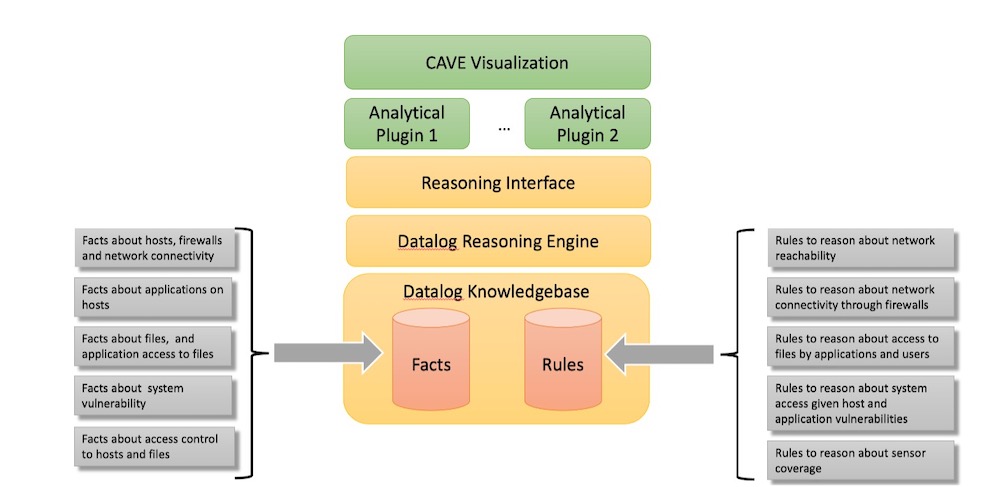
High level diagram of data flows in the CAVE system. (credit: NASA/JPL)
Monolithic Assembly of Reflective Spatial Heterodyne Spectrometer
-
US Patent Number: 7,032,395
-
Issued On: March 8, 2022
-
Inventor: Seyedeh Sona Hosseini
A new Reflective Spatial Heterodyne Spectrometer (RSHS) instrument enables high etendue (a measurement of sensor throughput), together with high spectral resolving power, termed R, in an ultra-compact and cost-effective design. The new RSHS design has significantly lower mass and does not use a telescope (or one with a small aperture). It is well suited for far-UV to near-IR wavelengths, which is ideal for science, remote sensing, and medical applications.
Traditional interferometers are based on path-length differences that require beam splitters, refractive optics, and scanning mirrors in a non-common path layout. State of the art imaging spectrometers are large, have a small angular field-of-view (FOV), and require a large aperture telescope to achieve high R.
One of the challenges of using high R sensors in space is maintaining alignment due to tight tolerances of the optics. This patent discloses a monolithic assembly of the RSHS design that provides a way to fabricate robust RSHS interferometers from one piece of glass, which intrinsically maintains alignment.
This patent discloses the design and also certain applications of the miniaturized monolithic RSHS instrument. This design can be scaled without major technical changes for more flexibility, while keeping the instrument compact and cost-effective.
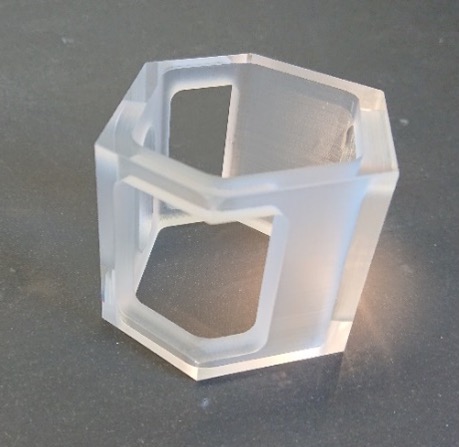
(credit: NASA/JPL)